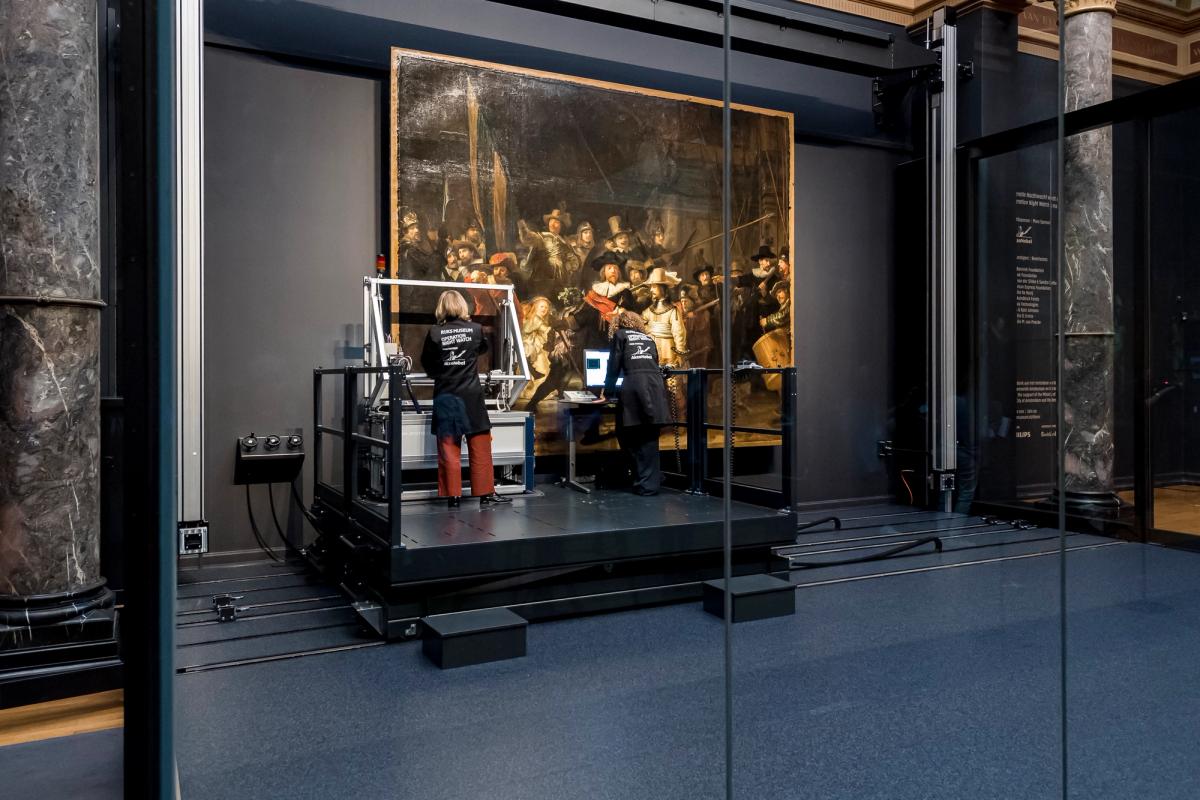Long before there was a damp-proofing layer in houses, the Dutch Old Master Rembrandt apparently used one on his painting. New chemical research into his 1642 masterpiece The Night Watch, published in the journal Science, has discovered that he gave the entire painting a lead-impregnated base layer, probably to protect it from the damp outer wall where it was first mounted.
His painting of civilian soldiers marching out to defend Amsterdam was originally more than four metres by five metres and commissioned to hang in the Kloveniersdoelen guild meeting hall where these musketeers were based.
As part of the extensive Operation Night Watch project to restore the painting inside a glass box in the Rijksmuseum, scientists investigated a paint sample using a particle accelerator, the Petra III system in Hamburg. They compared it with a lead map of the painting created with a macro X-ray fluorescence scanner and discovered a previously-unknown lead layer.
“At first we were puzzled by where the lead was coming from in this ground layer,” Fréderique Broers, a research scientist at the Rijksmuseum, told The Art Newspaper. “Lead white pigment and lead-tin yellow were often used by Rembrandt [in the paint], but we found a lot of lead in the dark background, especially at the top, where we would not expect these pigments to be present. In the sample, we clearly saw that the lead was coming before the [quartz-clay] ground, so the hypothesis is that he used an impregnation layer containing lead.
“At the time there were often single brick houses, they had fewer tools to keep the temperature more constant and, of course, in the Netherlands it rains, so humidity is high.”
At around the same time, the physician to English and French royalty, Sir Théodore de Mayerne, made a guide for painters based on developing chemical knowledge. “He describes a painting hung on the outer wall and, because of a lot of damp and moisture, the paint areas got disconnected from the canvas because it had a glue [base],” said Broers. “He suggests that if you have a painting that’s going to be hung on an exterior wall, it’s better to use a lead-containing oil instead of glue. So that knowledge was there, although we haven’t encountered it before in Rembrandt or his contemporaries.”
One downside of the discovery, however, is that even more care must be taken to minimise contact with cleaning solvents. Thanks to chemical reactions over the years and previous restoration efforts, the lead has reacted with the oil paint to form globules (little crystal balls) that push to the surface of the painting and sometimes fall out. “This really does explain the current condition of the painting,” Broers said.


